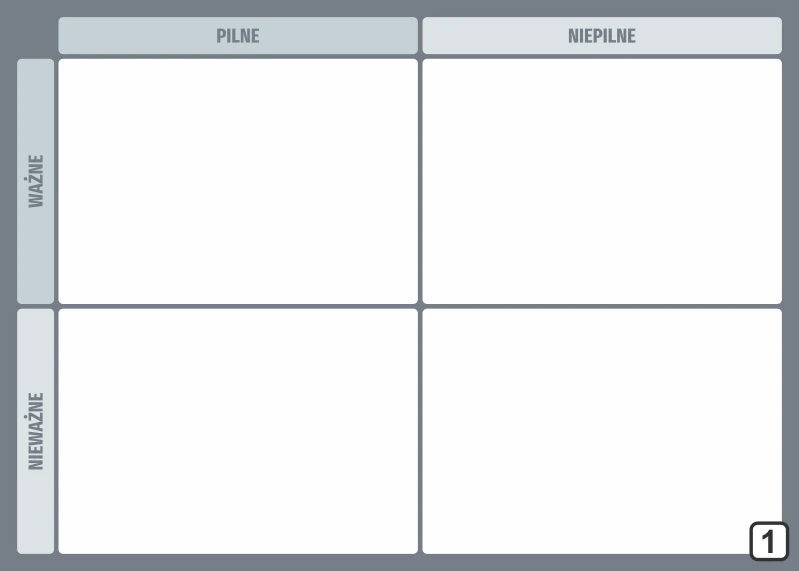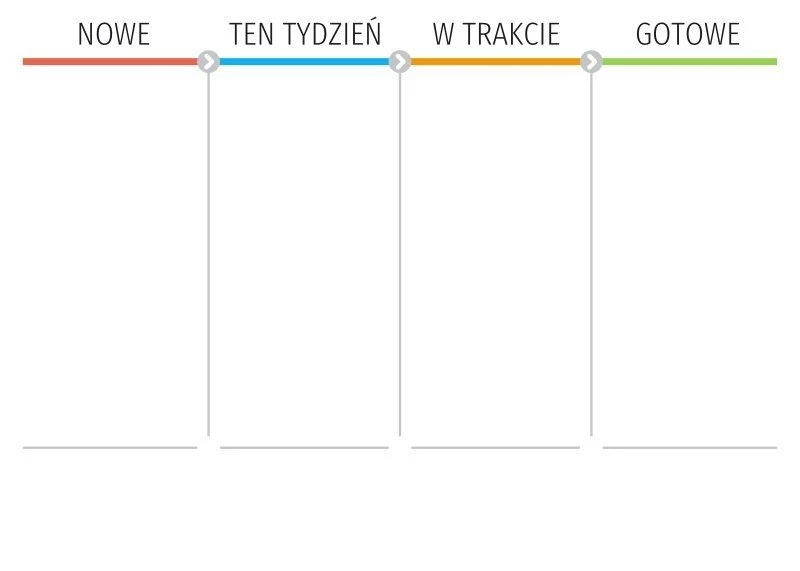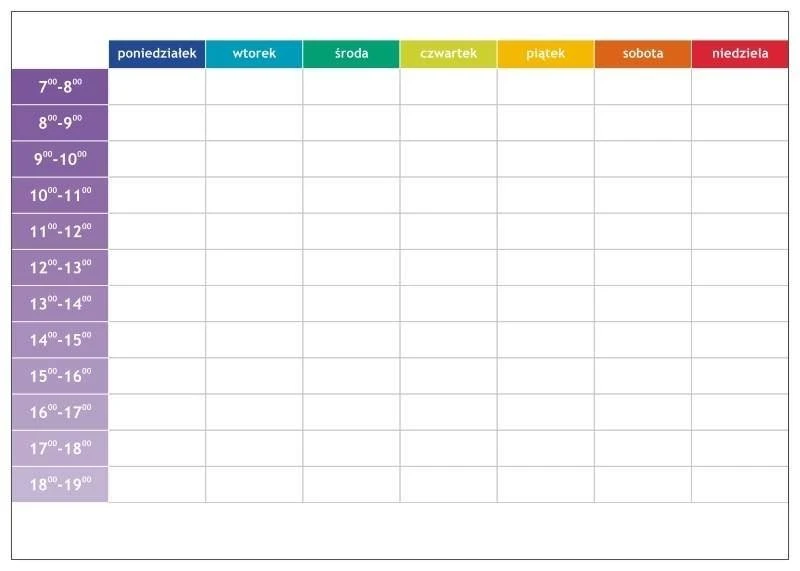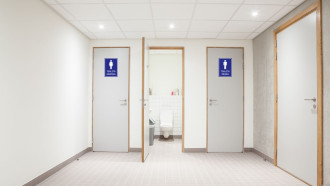In today's dynamic world, effective time management has become an essential element of success both in professional and personal life. Each of us faces the challenge of juggling numerous responsibilities, tasks, and goals every day. We often lack the tools and methods that would help us organize our daily activities in a thoughtful and efficient manner. Fortunately, there are many techniques and tools that can significantly improve our time management skills, and one of them is magnetic dry-erase boards.
Magnetic dry-erase boards are versatile tools that are gaining popularity both in offices and homes. Their flexibility and ease of use make them an ideal solution for visualizing tasks, goals, and plans. These boards offer the possibility of easily writing, modifying, and erasing notes, making them perfect for daily planning. Additionally, the magnetic surface allows the use of various magnets, further enhancing their functionality.
Why should you consider magnetic dry-erase boards? Primarily because they allow for the creation of clear and readable plans that can be easily updated as needed. With them, you can quickly see what needs to be done, which tasks are priority, and which can wait. Unlike traditional paper planners, magnetic dry-erase boards enable dynamic task management without the need for constant rewriting of notes.
In this post, we will take a closer look at various time management techniques that can be successfully implemented using magnetic dry-erase boards. We will discuss methods such as the Pomodoro technique, Eisenhower matrix, Kanban, daily task lists, weekly planners, SMART goals, time blocking, habit tracking, priority lists, and goal boards. Each of these techniques will be described in detail, along with ways to implement them using magnetic dry-erase boards.
Practical tips and tricks included in the article will help you fully utilize the potential of this tool, and regular updates and reviews of tasks will make time management even more effective. Whether you are a busy professional, a student, or a homemaker, you will undoubtedly find something useful here.
We encourage you to read on and discover how magnetic dry-erase boards can transform your approach to time management. Ready for a change? Let's get started!
Main Time Management Techniques
1. Pomodoro Technique
The Pomodoro technique was developed by Francesco Cirillo in the 1980s and involves dividing work into 25-minute intervals, called Pomodoros, separated by short, 5-minute breaks. After four such cycles, take a longer break of 15 to 30 minutes. The technique's name comes from the kitchen timer shaped like a tomato that Cirillo used during his studies.
How to Use a Magnetic Dry-Erase Board to Track Pomodoros?
On the magnetic dry-erase board, you can draw a table with columns representing consecutive Pomodoros and breaks. Each completed Pomodoro can be marked with a magnet or marker.
Example Visualization on the Board
Using colorful magnets or markers, you can easily track progress in task completion. Each magnet can symbolize one completed Pomodoro, and changing the color can indicate moving on to the next task.
2. Eisenhower Matrix
The Eisenhower matrix, named after General Dwight D. Eisenhower, involves categorizing tasks by their urgency and importance. Tasks are classified into four categories:
- Urgent and important: require immediate attention
- Important but not urgent: to be scheduled for later
- Urgent but not important: to be delegated
- Not important and not urgent: to be eliminated
Implementation on a Magnetic Board
On the magnetic dry-erase board, draw a 2x2 matrix, dividing the surface into four squares. Using magnets, assign individual tasks to the appropriate quadrants of the matrix.

3. Kanban
Kanban is a workflow management method that allows for the visualization of tasks at various stages of completion. The main columns in the Kanban system are:
- To Do
- In Progress
- Done
Creating Columns on a Magnetic Dry-Erase Board
On the dry-erase board, draw three columns and name them "To Do," "In Progress," and "Done." Use magnets or sticky notes to mark tasks and move them between columns as work progresses.

4. Daily Task List (To-Do List)
A daily task list helps organize the day and maintain focus on the most important tasks. It allows you to track what has been done and what still needs to be completed.
How to Organize Daily Tasks on the Board?
Every morning, write the list of tasks for the day on the magnetic dry-erase board. You can use different colored markers to indicate priorities or task categories (e.g., work, home, personal).
The task list might look like this:
5. Weekly Planner
A weekly planner allows you to plan the entire week in advance, helping to avoid surprises and better manage time.
How to Create a Weekly Schedule Using Magnets?
On the magnetic dry-erase board, draw a table with columns for each day of the week. Write tasks, meetings, and other important events in it.
The weekly schedule might look like this:

6. SMART Goals
The SMART method helps define goals that are:
- Specific
- Measurable
- Achievable
- Relevant
- Time-bound
How to Create and Track SMART Goals on the Board?
On the magnetic dry-erase board, write your goals in the SMART format. You can use magnets or colorful markers to indicate the different SMART criteria.
7. Habit Tracking
Habit tracking involves monitoring daily activities that we want to incorporate into our lives. It helps build new, positive habits and eliminate negative ones. This method is often used for personal development but can also apply to organizational changes in team behavior or maintaining motivation for specific activities.
How to Create a Habit Tracking Table?
On the dry-erase board, draw a table with days of the week and habits you want to track. Each day, mark whether you managed to follow the habit.
8. Priority List
A priority list helps determine which tasks are most important and should be completed first. It often uses ABC or 1-2-3 designations.
How to Clearly Mark Priorities?
Write the task list on the magnetic dry-erase board and then mark them with priorities. You can use different colored markers or magnets to highlight high-priority tasks. Priorities can be written on magnetic mats, which can be attached to the board in the correct order (from highest to lowest priority). The advantage is that in case of priority changes, you can quickly move the task to a new position (higher or lower).
9. Goal Board
A goal board is a tool that helps visualize both short-term and long-term goals. It allows you to track progress and stay motivated to achieve them.
On the magnetic dry-erase board, write goals in the form of a list or table. Use colorful magnets or markers to indicate progress. You can use the method described above.
Magnetic dry-erase boards offer flexibility and convenience in time management, and the described techniques allow for effective planning and organization. They help you better understand which tasks are most important, track progress, and stay motivated to keep working. Regardless of the chosen technique, magnetic dry-erase boards can become an invaluable tool in daily time management.
Practical Tips and Tricks
Magnetic dry-erase boards are versatile time management tools that can be easily adapted to individual needs. To fully utilize their potential, it is worth applying some practical tips and tricks. Below are the most effective ones:
Use colorful markers and magnets
Colors can significantly improve the readability and organization of a dry-erase board. They help quickly distinguish tasks, priorities, and categories. Using colorful markers and magnets allows for better visualization and easier navigation on the board.
Example of a color code:
- Red: High-priority tasks, urgent matters
- Green: Completed tasks, achieved goals
- Blue: Planned tasks, long-term goals
- Yellow: Notes, reminders, additional information
Divide your board into sections and use colorful markers to highlight different types of tasks. You can also use colorful magnets to attach sticky notes with tasks and information. This way, your board will be clearer and easier to read.
Review and update the board contents regularly
To make a dry-erase board effective, it is essential to regularly update the information on it. Systematic reviews allow you to keep track of progress, eliminate completed tasks, and plan new ones. A useful tool for frequent content updates, tables, and charts are magnetic frames. They allow for easy and quick printout exchange, and the frame's construction secures the printout from falling off the board.
How often to update the board?
Daily reviews of short-term tasks and weekly reviews of long-term goals are recommended. This way, you will keep the board organized and always have up-to-date information in front of you.
Set specific times of the day or week for board updates. For example, review the task list for the day every morning before starting work, and plan tasks for the upcoming week on Friday afternoon.
Personalize the board
Personalizing a dry-erase board makes it more tailored to your needs and preferences. You can add various elements such as photos, inspiring quotes, or favorite motivational graphics to make the board more attractive and motivating.
How to personalize the board area?
- Photos: Place photos of loved ones, favorite places, or dream goals on the board.
- Quotes: Write inspiring quotes that will motivate you to take action.
- Motivational Graphics: Add graphics that remind you of your goals and dreams.
Use magnets to attach photos and quotes. You can also use colorful tapes to create frames for your personalized elements. This way, your board will not only be an organizational tool but also a source of inspiration.
Create sections and subsections
Dividing the board into sections and subsections allows for better organization of different areas of life and work. You can create separate sections for professional tasks, personal tasks, projects, long-term goals, and daily duties.
Examples of section divisions:
- Current Tasks: Projects, meetings, deadlines
- Long-Term Goals: Annual plans
- Weekly Plans: Daily to-do lists
Draw lines dividing the board into different sections. Use different colored markers or tapes to highlight individual sections. Each section should have a clear header and layout.
Use sticky notes
Sticky notes are a great way to organize tasks that can be easily moved and modified. They allow for flexibility and quick response to changes.
How to use sticky notes on the board?
- To-Do Tasks: Write tasks on sticky notes and attach them in the "To Do" section.
- Notes and Reminders: Use sticky notes to write short notes and reminders.
- Project Planning: Create a project schedule with sticky notes that can be moved as work progresses.
Use different colored sticky notes to mark different categories of tasks. Attach them to the board and move them as needed. This way, your board will be more dynamic and easy to update.
Visualize progress
Visualizing progress helps track task and goal completion, increasing motivation and providing a sense of accomplishment.
Create task lists that you can check off as you complete them. To visualize progress, you can use magnets (to mark completed project stages).
Use schedules and calendars
Schedules help plan the day, week, or month, allowing for better time management and avoiding overload.
Examples of schedules:
- Daily Schedule: A daily plan with hours and tasks to complete.
- Weekly Schedule: A weekly plan with tasks for each day.
- Monthly Schedule: A monthly plan with key events and deadlines.
On the dry-erase board, draw daily, weekly, or monthly schedules. Use markers and magnets to mark important tasks and deadlines. This way, you will have a clear picture of your plans and better manage your time.
Summary
Magnetic dry-erase boards are incredibly versatile and effective time management tools that can significantly improve our productivity and organization in both professional and personal life. They allow us to easily visualize tasks, goals, and plans, making it easier to control progress and better manage priorities. In this article, we presented various time management techniques that can be successfully implemented using magnetic dry-erase boards, such as the Pomodoro technique, Eisenhower matrix, Kanban, daily task lists, weekly planners, SMART goals, time blocking, habit tracking, priority lists, and goal boards.
What are the benefits of time management using magnetic dry-erase boards?
- Better organization: These boards enable the creation of clear and readable plans that can be easily updated as needed. They allow us to quickly see what needs to be done, which tasks are priority, and which can wait.
- Task and goal visualization: The ability to visualize tasks and goals helps us better understand what is most important and track progress. This, in turn, increases our motivation and gives a sense of accomplishment.
- Flexibility and simplicity: Magnetic dry-erase boards are easy to use and can be quickly adapted to changing needs. They allow for easy writing, modifying, and erasing notes, making them ideal for daily planning.
- Motivation and progress tracking: Visual tracking of task and goal completion motivates continued work and helps maintain high efficiency. Regular updates and reviews make time management even more effective.
Each of the described time management techniques has its unique advantages and can be tailored to individual needs. Whether you are a busy professional working remotely, a student, or a homemaker, you will undoubtedly find something useful here. We encourage you to try one or more of these techniques and incorporate them into your daily routine. Start with one chosen technique and gradually introduce others to see which ones work best for you.
We invite you to comment and share your own experiences with time management using magnetic dry-erase boards. Do you have your own tried-and-true methods and tricks that were not mentioned here? We would love to hear your ideas and inspirations. Additionally, we encourage you to subscribe to our newsletter to receive more tips and articles on time management and productivity. With regular updates, you will stay up-to-date with the latest techniques and tools to help you better manage your time and achieve your goals.
Thank you for taking the time to read this post. We hope the information contained here will be helpful and inspiring, and that the time management techniques using magnetic dry-erase boards will contribute to improving your organization and efficiency. Remember, the key to success is consistency and regular reviews, and the dry-erase board can become your indispensable tool in daily planning. Good luck with time management and achieving your next successes!

Paweł
Paweł – production master at Wallyboards
Paweł is a key figure in our production department – thanks to his precision and commitment, every product that reaches our customers meets the highest standards. He’s responsible for printing, maintaining machines, and digitally painting artworks using a computer and plotter. His experience and attention to detail ensure top-quality craftsmanship in every order.







